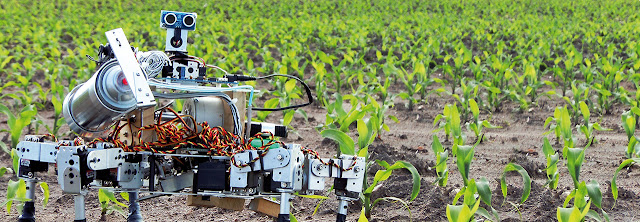In Agriculture, Agriculture Robots are used for Harvesting Purposes
 |
| Agriculture Robots Market |
Tractors today are large and heavy, and if one breaks down,
the entire workflow is disrupted. To address this, the robotics options include
a number of fully autonomous tractors that are now in development, with some
cutting-edge versions already in use. These self-contained machines are
equipped with diagnostic systems that can identify and locate any malfunction.
Furthermore, because they are driverless, they do not require operators,
letting farmers to work around the clock.
Another time-consuming, labor-intensive, unhealthy, and
expensive job is weeding. Sensor devices that use artificial intelligence to
recognise weeds and pick them out are among the robotics technologies that
address this challenge. Some weeding robots on the market are powered by solar
panels that charge during the day and allow them to work at night. Their
self-service application is a key component of their success, since it notifies
operators when issues develop, allowing farmers to better manage their time and
focus on other things.
The Drop-on-Demand system is another weeding technology that
allows devices to detect weeds and remove them by spraying a very precise and
little pesticide dose. Herbicide use is estimated to be 1.2 million tonnes per year
globally, but precision approaches like DoD and other vision-based weeding
robots help farmers reduce this to less than 10%, lowering their negative
environmental and socioeconomic implications dramatically. Agriculture
robots are also a viable pest control alternative. Pesticides are used
in agriculture in excess of 4 million tonnes per year, according to the FAO.
Despite the fact that preserved crops can repay up to four times the
investment, pesticide use has indirect economic and environmental consequences
of about $12 billion each year in the United States alone.
Only 0.1 percent of pesticides sprayed reach bugs directly,
while 99.9% diffuse into the surrounding environment. By implementing
pest-detection robotic solutions and eradicating them using precision
approaches, agriculture robots can drastically minimise the amount of
pesticides used. Autonomous seeding robots are now equipped with the same
cutting-edge agricultural technologies.



Comments
Post a Comment